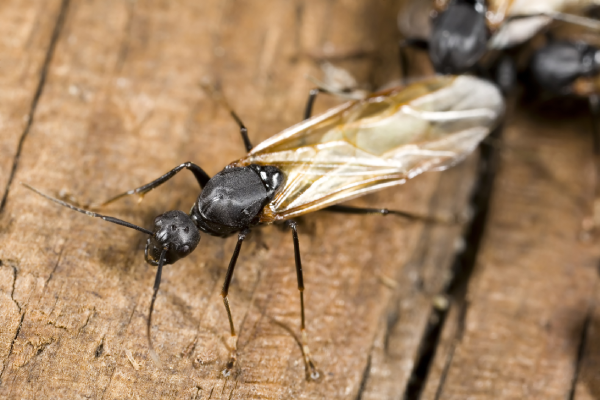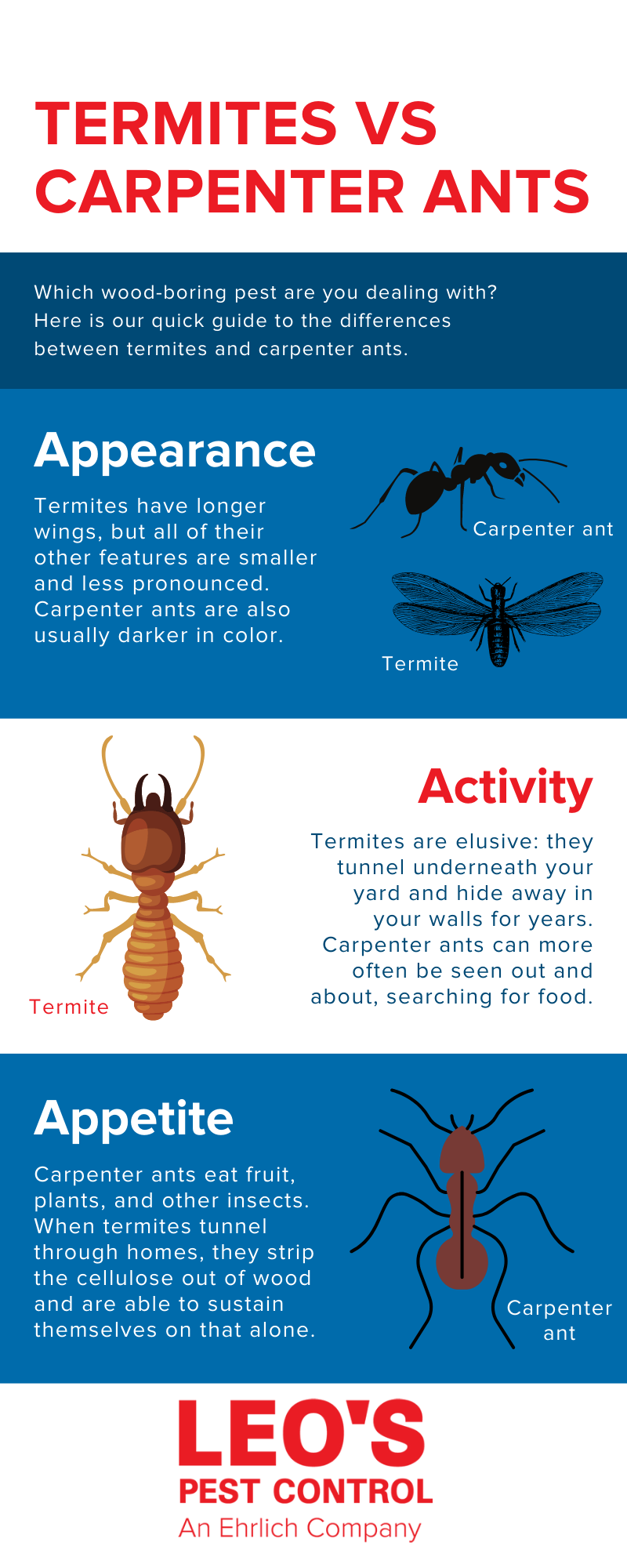
One of the biggest mistakes people make when it comes to termites is assuming they’re just ants. This is because flying ants, also known as carpenter ants, are similar in both appearance and behavior to termites. Unfortunately, both of these pests are capable of doing some serious wood damage, making it imperative to learn how to differentiate the two so that proper pest control measures can be taken.
The experts at Leo’s Pest Control are here to help—read on to learn everything you need to know about identifying termites vs ants.
Do I Have Termite Swarmers or Flying Ants?
Let’s face it: no one wants to get close enough to one of these insects to properly identify it. Thankfully, there are a few key differences that help easily pinpoint which wood-destroying insect you have. Here’s how you can tell apart termites and winged ants:
- Appearance. Carpenter ants are larger and display more pronounced features than termites. They have a tapered-in waist, longer antennae, and two long pairs of wings, each of different sizes.
- Habitat. Although you could easily have either insect species in your home, termites are less likely to show themselves. Because they eat wood and nest underground, termites have no reason to not be either in your yard or in your walls, unless they’re swarming. Carpenter ants only nest in wood, preferring to eat plants and tiny insects, so they’re out and about more often.
Need Help Identifying Termites vs Ants?
Click the button below to leave your information.
 Termite vs Flying Ant: Which is Worse?
Termite vs Flying Ant: Which is Worse?
One of the best ways you can tell the difference between termites and carpenter ants is by looking at the damage they cause. Carpenter ants are on the lookout for decayed wood that they can work through to find sound wood. It can be difficult to tell if your wood is decaying from the outside in some cases, but finding a bunch of ants at a specific location around the exterior of your home is a bad sign.
Termites, on the other hand, eat the cellulose found in the wood, tunneling through it in the process and creating a torn and striated appearance. They nest underground and build tunnels towards the closest source of healthy wood to have easy food access. If you have subterranean termites in your home, you’ll probably find mud tubes protruding from your yard, linking up with siding, porches, doorways, basement windows, and other entry points to your home.
Professional Help Identifying Termites vs Ants
Termites vs Ants in Bristol TN
Serving Tennessee & Virginia
